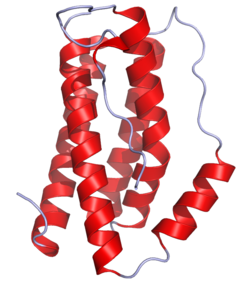**Function and Role in the Body**:
– IL-6 is secreted by macrophages in response to PAMPs via PRRs, inducing inflammatory cytokine production.
– It mediates fever, acute phase response, and stimulates acute phase protein synthesis.
– IL-6 supports neutrophil production, B cell growth, and is antagonistic to regulatory T cells.
– Capable of crossing the blood-brain barrier, IL-6 affects body temperature regulation.
– Adipose tissue contributes significantly to circulating IL-6 levels, influencing CRP levels and body fat regulation.
**Immune System Function**:
– IL-6 is crucial for inflammatory responses, fever induction, and innate immune system signaling cascades.
– It supports acute phase protein synthesis, neutrophil production, and B cell growth.
– Macrophages secrete IL-6 in response to PAMPs through PRRs, highlighting its role in immune response.
**Metabolic and Central Nervous System Effects**:
– IL-6 stimulates energy mobilization, influences body temperature regulation, and affects energy homeostasis.
– Adipose tissue is a significant source of circulating IL-6, impacting CRP levels and body fat regulation.
– In the CNS, IL-6 administration improves sleep-associated emotional memory consolidation and mediates food intake suppression and weight regulation.
**Role as Myokine and Signaling Pathways**:
– IL-6 is a myokine elevated in response to muscle contraction, mobilizing substrates and augmenting substrate delivery during exercise.
– It plays a crucial role in reducing abdominal obesity, stimulating lipolysis, and regulating exercise function.
– IL-6 signals through a cell-surface type I cytokine receptor complex, initiating a signal transduction cascade through JAKs and STATs.
**Disease Implications and Interactions**:
– IL-6 stimulates inflammatory and autoimmune processes in diseases, being implicated in conditions like multiple sclerosis, diabetes, and liver diseases.
– IL-6 is associated with poor prognosis in various diseases, including cancer, rheumatoid arthritis, and depression.
– Interactions with interleukin-6 receptor, glycoprotein 130, and other cytokines play a role in IL-6’s immunomodulatory activity and disease progression.
Interleukin 6 (IL-6) is an interleukin that acts as both a pro-inflammatory cytokine and an anti-inflammatory myokine. In humans, it is encoded by the IL6 gene.
In addition, osteoblasts secrete IL-6 to stimulate osteoclast formation. Smooth muscle cells in the tunica media of many blood vessels also produce IL-6 as a pro-inflammatory cytokine. IL-6's role as an anti-inflammatory myokine is mediated through its inhibitory effects on TNF-alpha and IL-1 and its activation of IL-1ra and IL-10.
There is some early evidence that IL-6 can be used as an inflammatory marker for severe COVID-19 infection with poor prognosis, in the context of the wider coronavirus pandemic.






